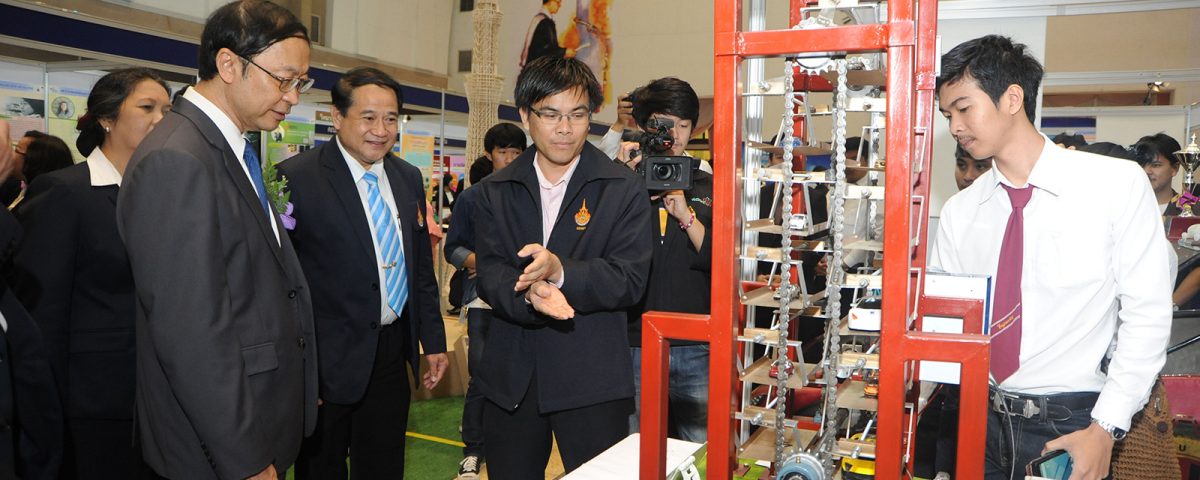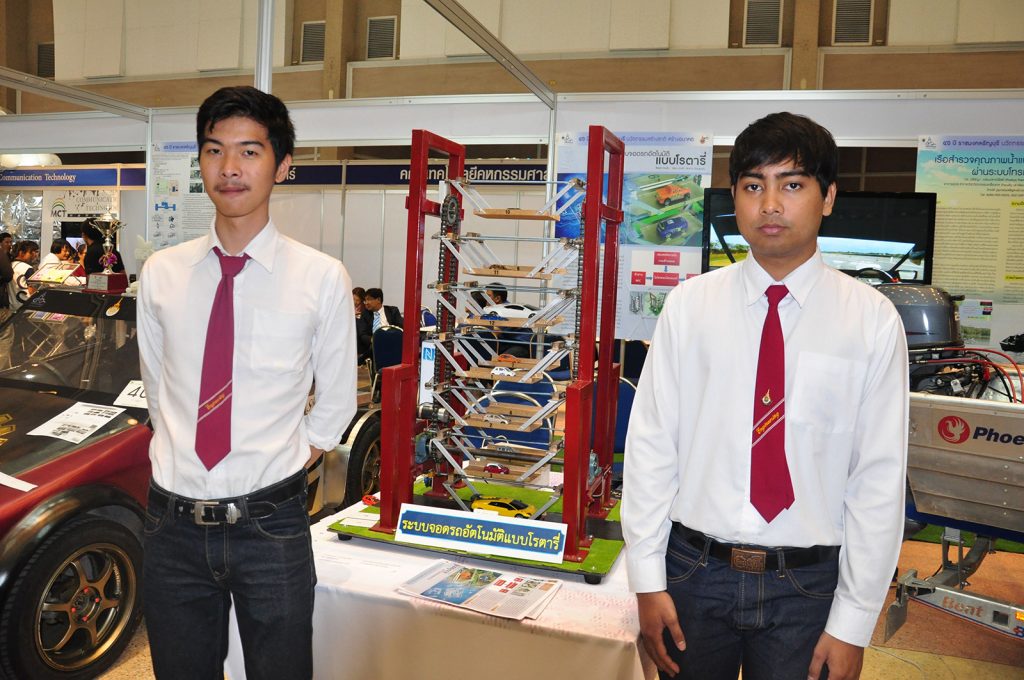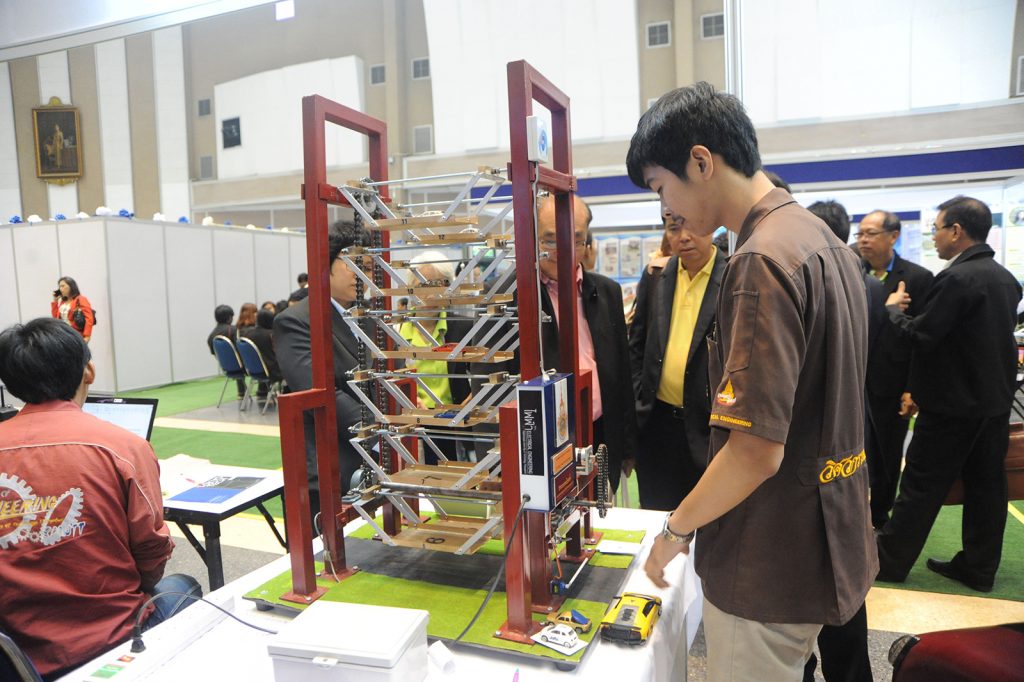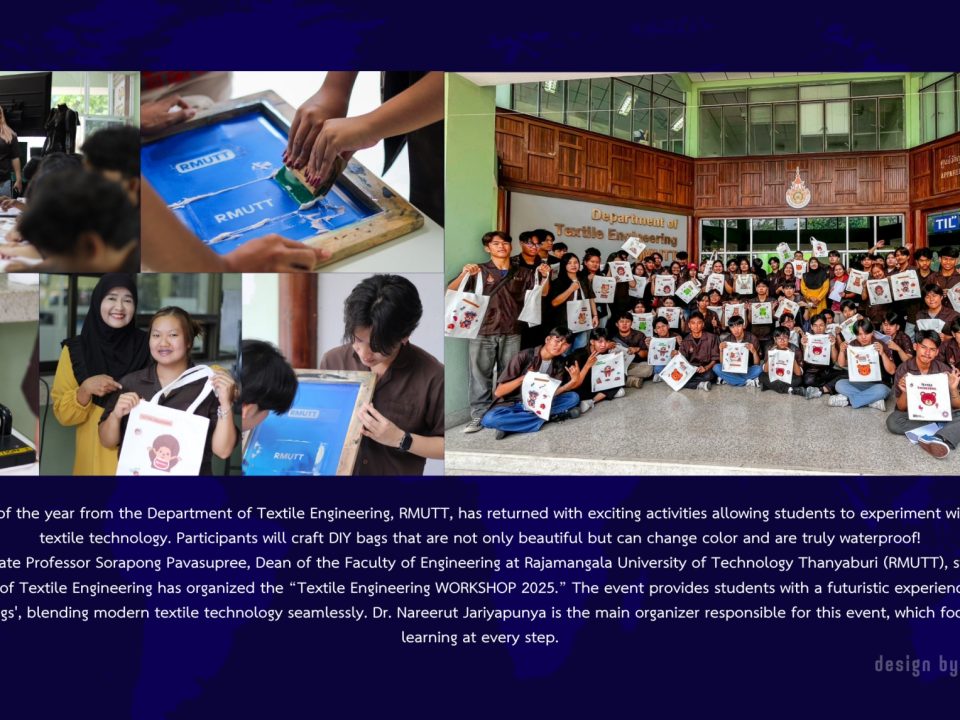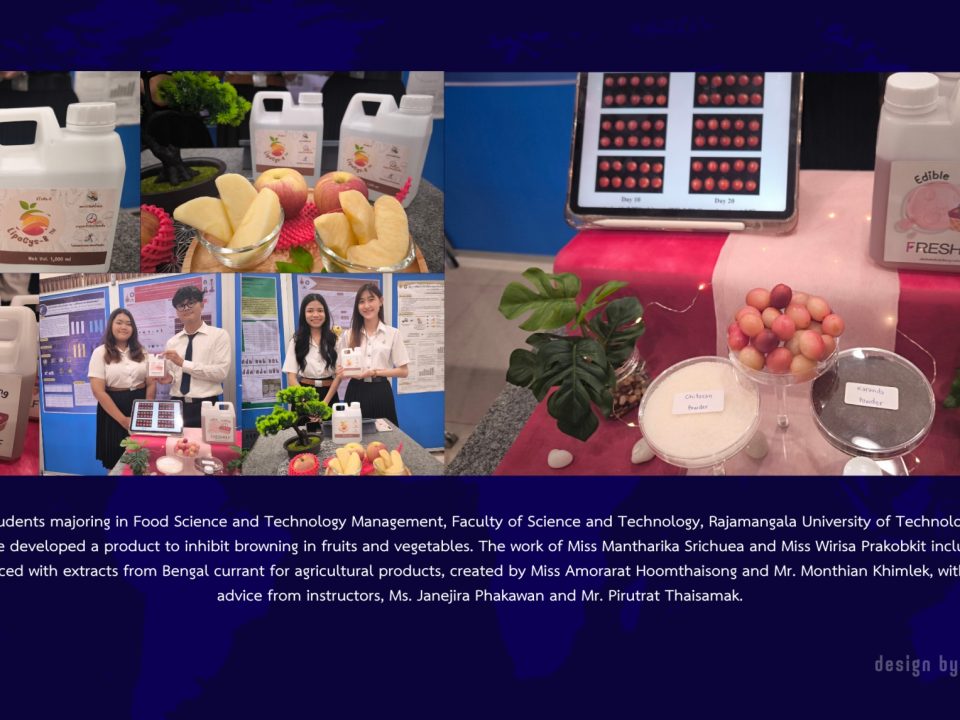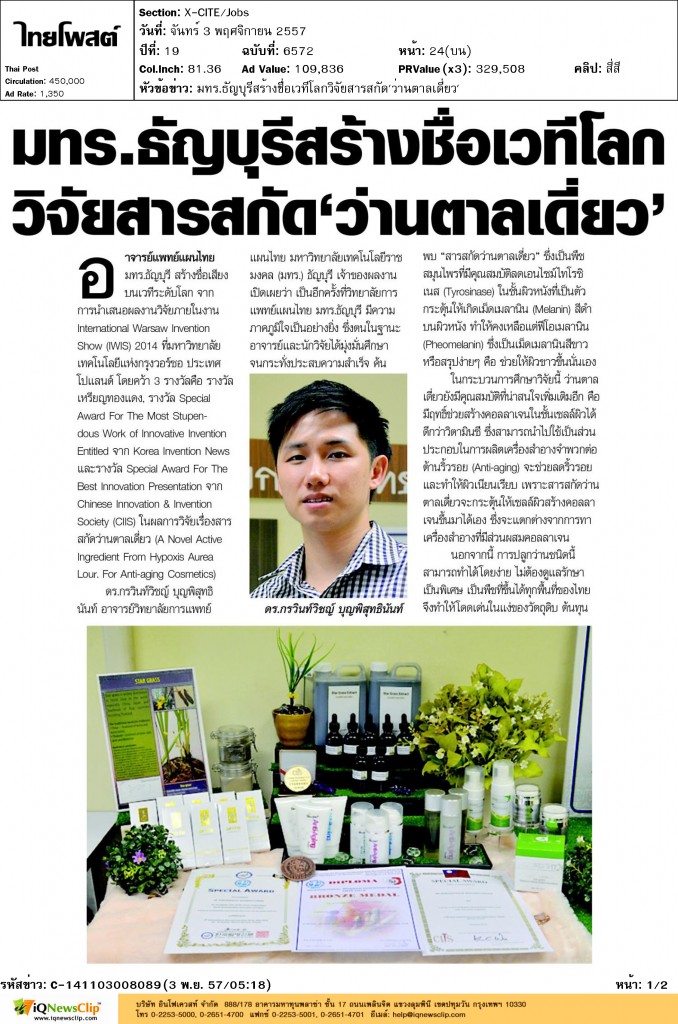
RMUTT Lecturer Presents an Award-winning Study on the Anti-aging Properties of a Local Herb
26/02/2015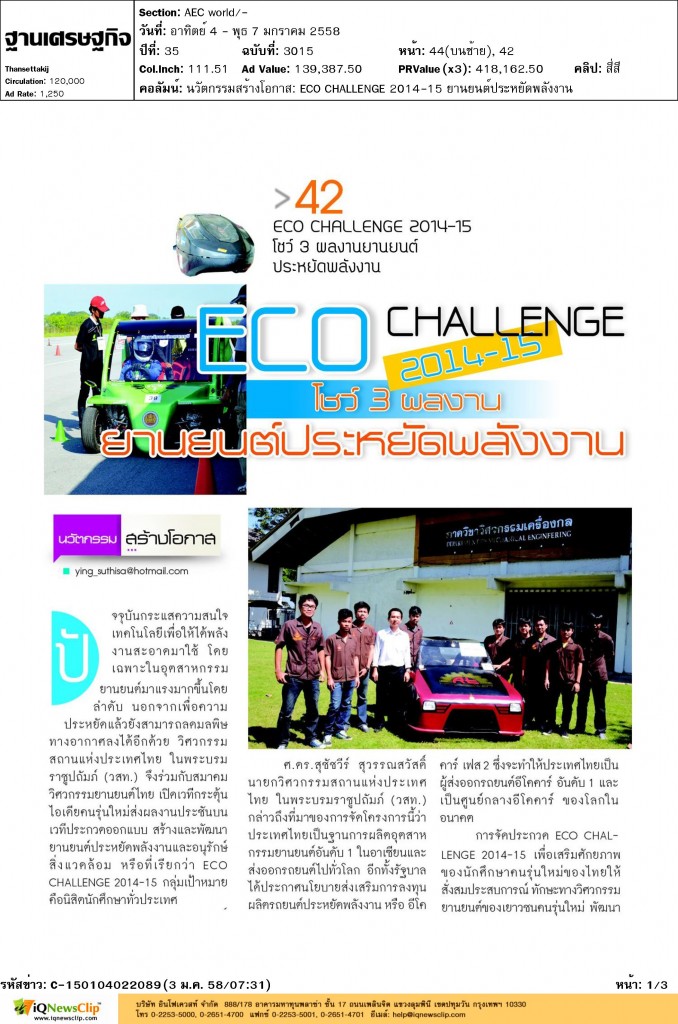
Eco Challenge 2014-15: Moving toward the Next Generation of Eco Cars
14/05/2015Rotary Parking System, a Parking Solution that Promises to Save Time and Energy
One of the problems that every driver in Bangkok and major cities encounters is finding a parking space. With ever increasing number of vehicles on the streets, this problem only gets worse. Building more parking spaces is not a practical solution, as the price of land is too high. Moreover, finding a parking space in existing car park buildings means driving around in circles before eventually getting a space, thus consuming both gas and time.
In order to solve this problem, Vorathon Puangkham and Chidphon Ram-on, two electrical engineering students at Rajamangala University of Technology Thanyaburi (RMUTT) together with their advisor Ajarn Somchai Biensoongneon, designed a prototype parking system that uses the rotating mechanism of a Ferris wheel. Each car is parked inside one of the 12 capsules, which rotates to receive and deliver the parked car in a designated spot. The proportion of the prototype to the actual size of a car is 1 to 28.
“The rotary parking system is controlled by a program called micro controller, which has two main parts, including the part that controls the structure, or the mechanism that receives the car and moves it to a designated parking capsule, and the part that controls the mechanism that transports the cars along the entire system,” said the inventor team.
“Before using the system, drivers must show their identifications, which will be verified by the Near Field Communication (NFC) system. If the identification is approved, the system will check whether the driver wants to bring the car in or out of the system. Cars leaving the system would be brought to the designated delivery spot. For cars looking for a parking space, an empty capsule will be rotated and brought to the same designated spot to receive the car. The system will calculate itself, so that the nearest empty capsule will be used first,” the team added.
The verification system uses a variety of options, including a card, an IC chip, a token, and through smart phone that has been installed with the NFC system. The rotary parking system itself has the following parts: the automated rotary system, NFC reader, calculation sensor, micro controller, and motor.
Initial pilot testing indicates that the system consumes 0.53Wh, or 164 seconds, to complete a rotation in one direction. When rotating the nearest capsule, the system consumes 0.26Wh, or 88 seconds, which means that the system operates in an efficient and cost-effective manner.
“The system not only helps to reduce time and gas consumption, but it also is efficient in terms of building space and manpower used to monitor each floor. It also helps to lower the rate of accidents that often occur when drivers make sharp turns in tight parking spaces. At this point, the prototype is ready to be developed into a commercial system,” the team said.
For more information, contact the Department of Electrical Engineering, Faculty of Engineering, at 02 549 3420.

